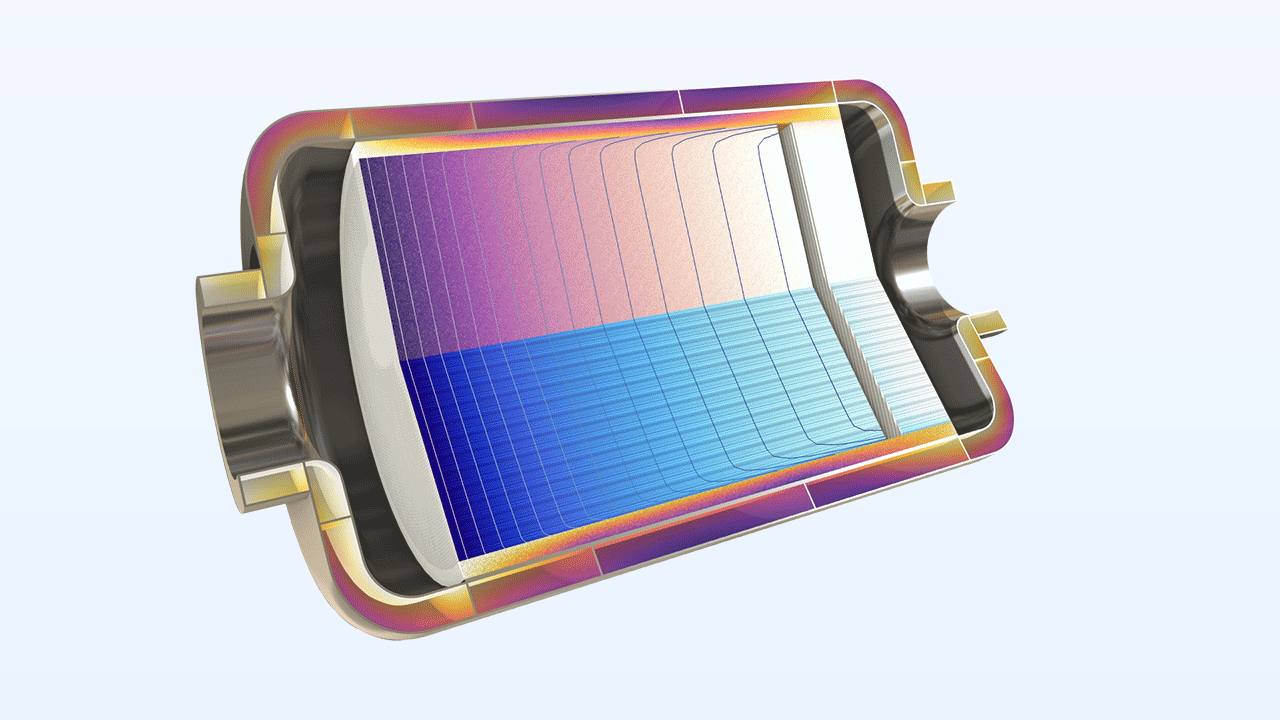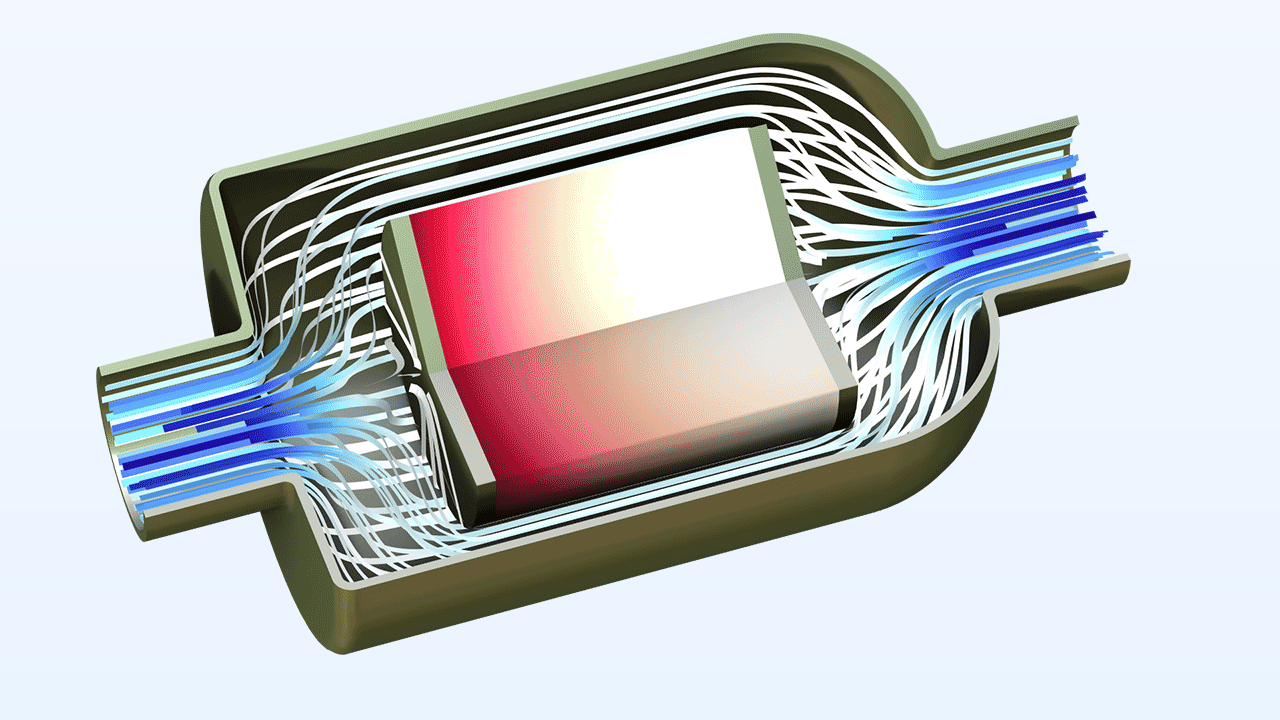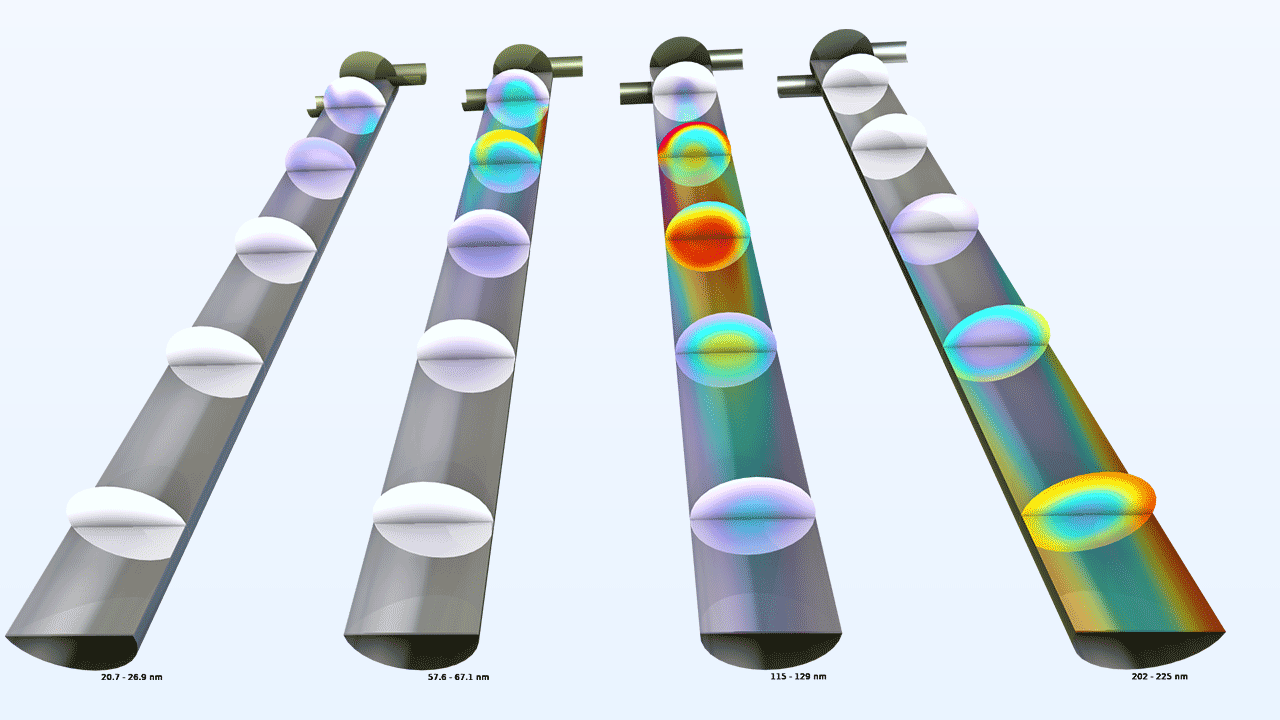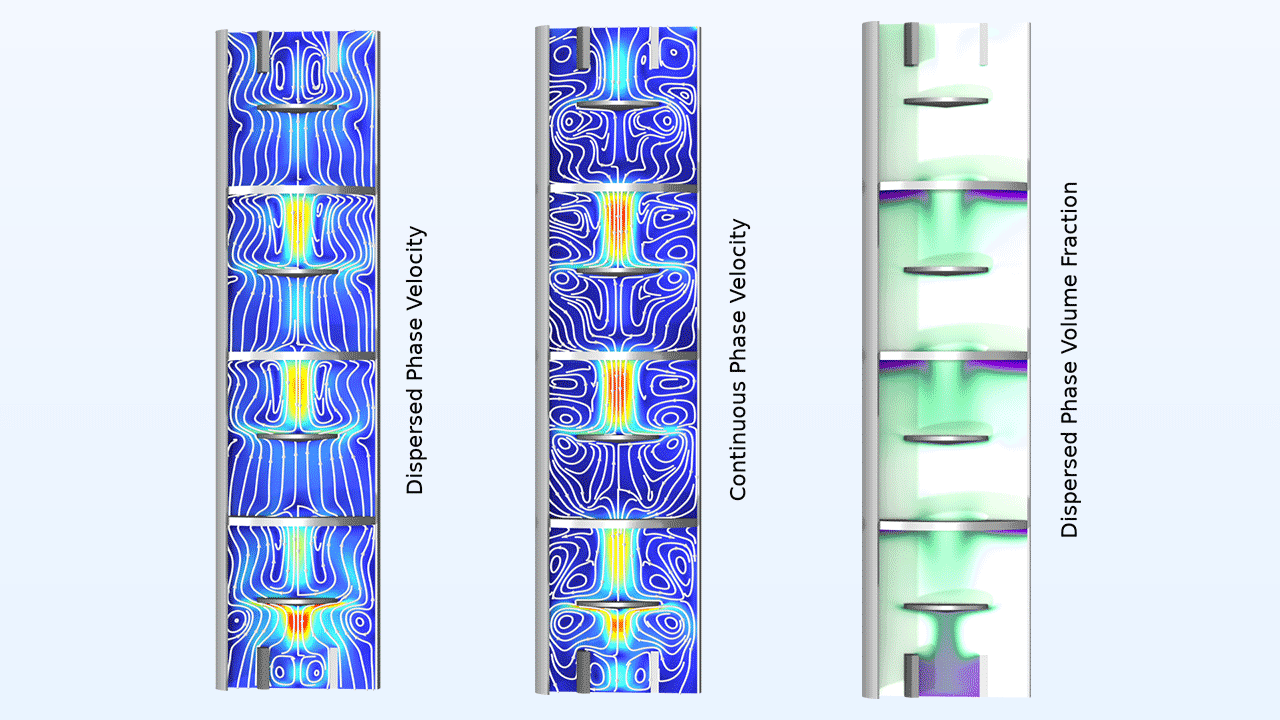Chemical Reaction Engineering Module Updates
Precipitation and Crystallization with Population Balance
The new functionality for modeling precipitation and crystallization processes enables studies of separation processes in areas such as the fine chemicals, bulk chemicals, and pharmaceutical industries. In space-dependent geometries, the Precipitation and Crystallization in Fluid Flow interface combines the new Size-Based Population Balance interface with Transport of Diluted Species and Laminar Flow interfaces. It calculates the population distribution in time and space — that is, it solves for the number density of all particle sizes — by accounting for particle nucleation, particle growth, and fluid transport. The Precipitation and Crystallization in Fluid Flow interface can also be used to compute the particle distribution in an ideal reactor model. The Precipitation of Barium Sulfate tutorial model demonstrates this new functionality.
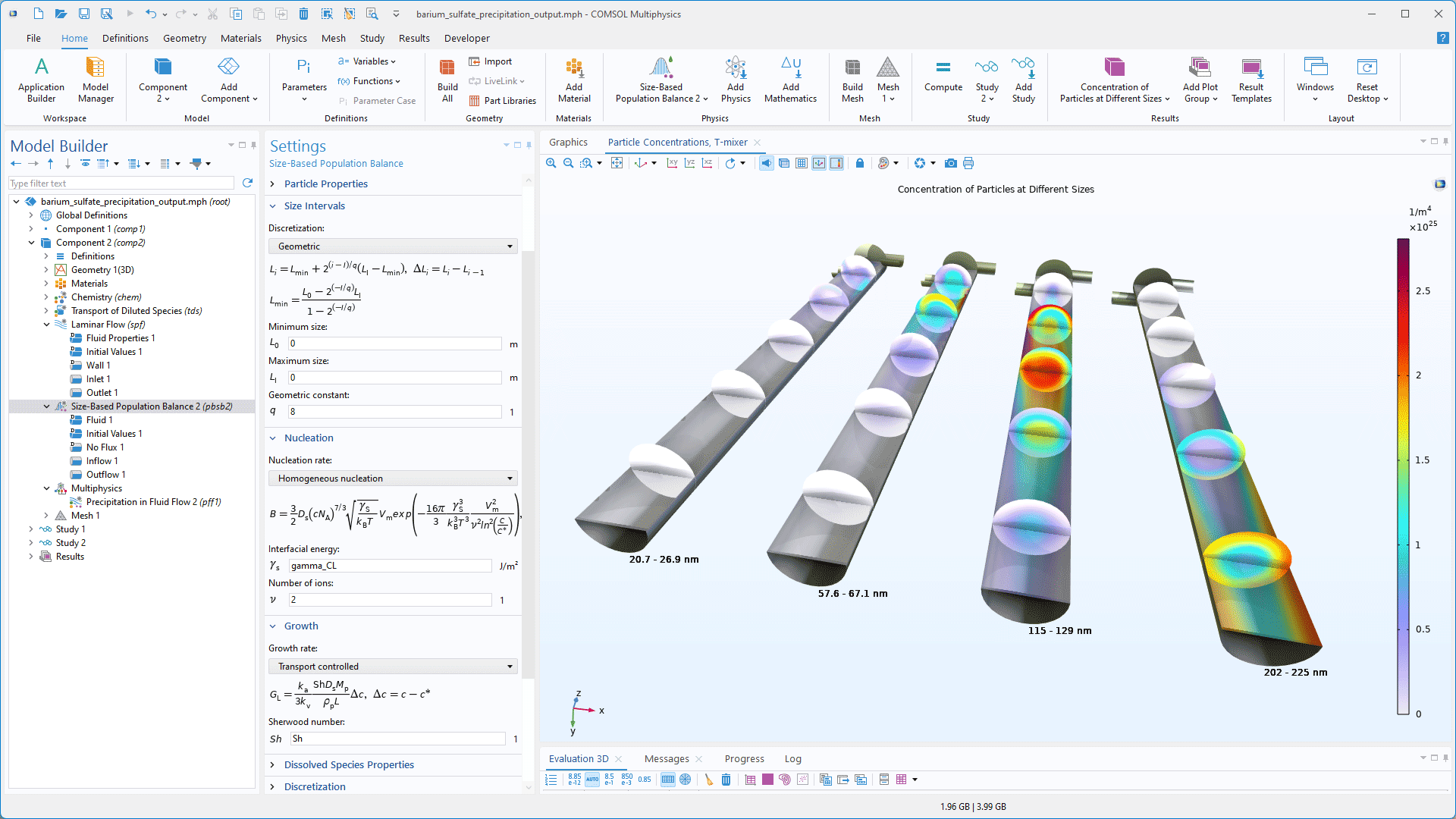
Generate Space-Dependent Models for Turbulent Reacting Flow
Setting up space-dependent turbulent reacting flow models is now easier, supporting studies in environmental sciences and various industries, including the chemical, pharmaceutical, and food & beverage industries. The Generate Space-Dependent Model feature automatically formulates isothermal and nonisothermal turbulent flow models directly from chemical reactions, eliminating the need for manual turbulence setup. It couples Reynolds-averaged Navier–Stokes (RANS) turbulence models with the Chemical Species Transport interface (and, for nonisothermal flow, with the Heat Transfer in Fluids interface as well) and uses the Kays–Crawford model by default for mass and heat transport.
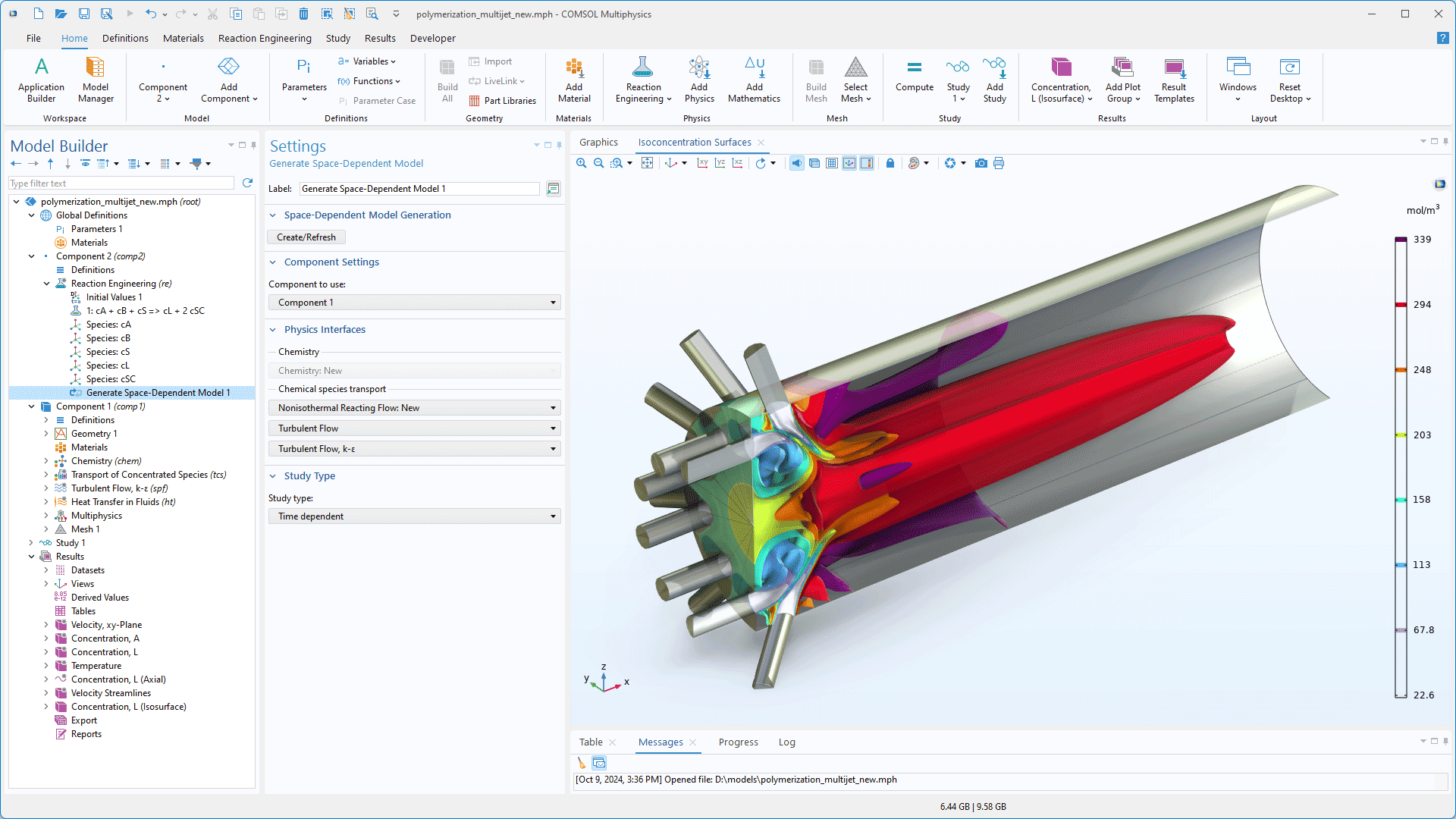
Result Templates in the Chemical Species Transport Interfaces
Creating useful and visually appealing plots of reacting systems can be time consuming since there are often many reactants and thus many concentration fields to plot. To save time, there are a number of new Result Templates in the Chemical Species Transport interfaces. Among these, plot array templates are now available that include up to four species concentrations simultaneously in the Graphics window. The Result Templates are available for all Chemical Species Transport interfaces, independent of the add-on product, but are especially useful for the multicomponent transport interfaces included in the modules for chemical engineering as well as in the CFD Module, Porous Media Flow Module, Subsurface Flow Module, and Microfluidics Module.
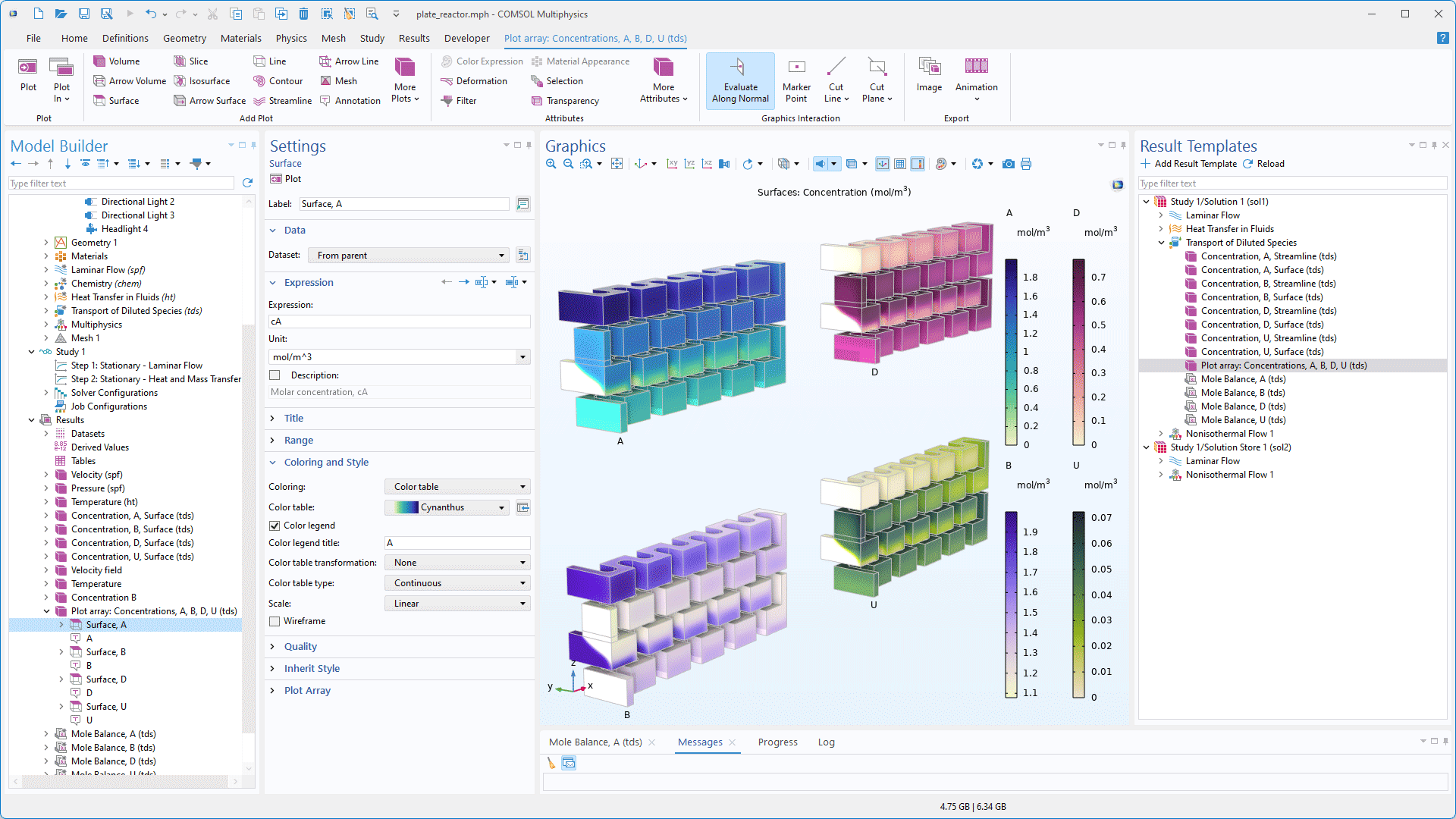
New and Updated Tutorial Models
COMSOL Multiphysics® version 6.3 brings several new and updated tutorial models to the Chemical Reaction Engineering Module.

